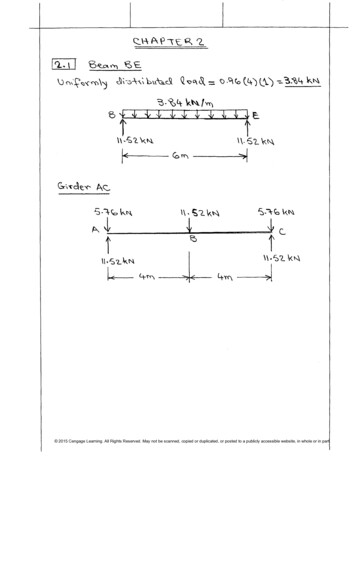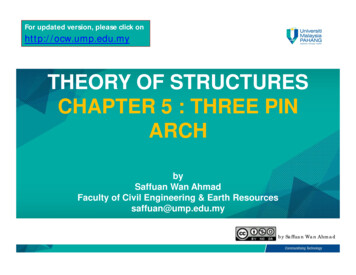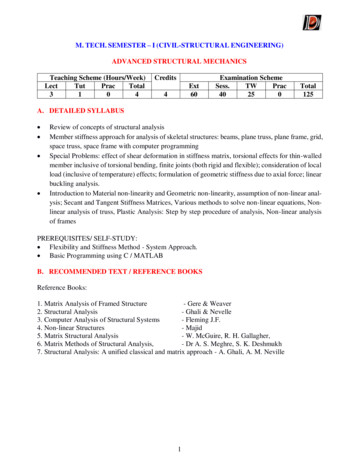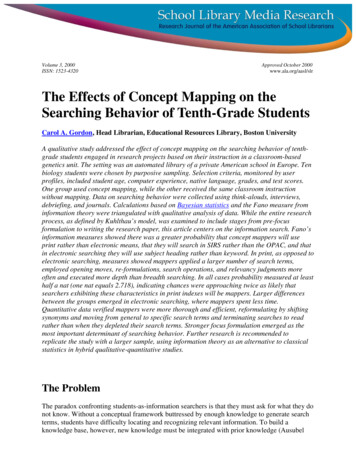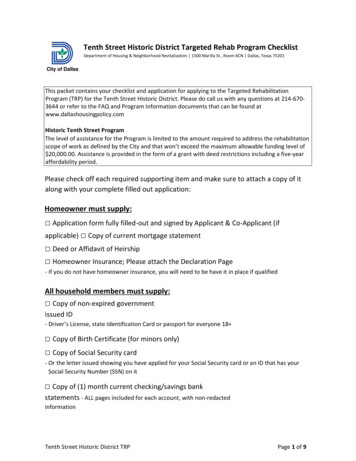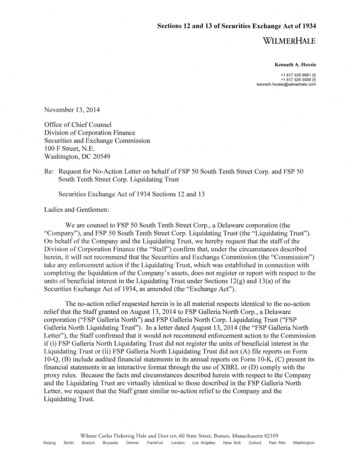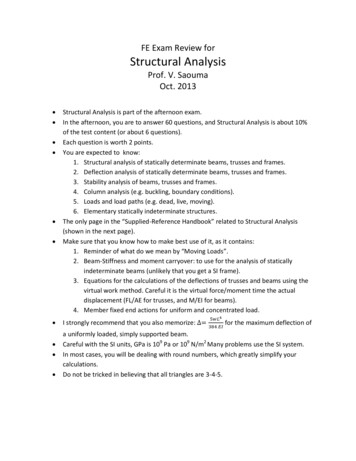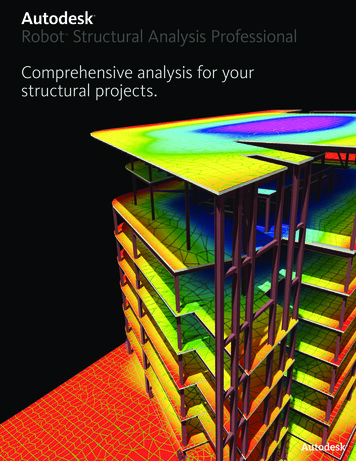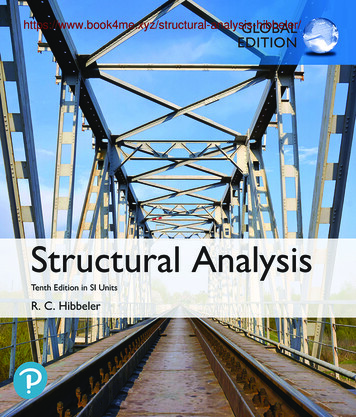
Transcription
er/
Access Full Complete Solution Manual bbeler/STRUCTURALANALYSISTENTH EDITION IN SI UNITSR. C. HIBBELERSI Conversion byKai Beng YapWith Additional SI Contributions byFarid Abed
er/Senior Vice President Courseware Portfolio Management:Marcia J. HortonDirector, Portfolio Management: Engineering, ComputerScience & Global Editions: Julian PartridgeSpecialist Portfolio Management: Norrin DiasPortfolio Management Assistant: Michelle BaymanField Marketing Manager: Demetrius HallProduct Marketing Manager: Yvonne VannattaMarketing Assistant: Jon BryantManaging Producer, ECS and Math: Scott DisannoContent Producer: Sandra L. RodriguezOperations Specialist: Maura Zaldivar-GarciaSenior Manufacturing Controller, Global Edition:Caterina PellegrinoProject Manager: Rose KernanEditor, Global Edition: Subhasree PatraManager, Rights and Permissions: Ben FerriniComposition: Integra Software Services, Inc.Printer/Binder: VivarCover Designer: Lumina Datamatics Ltd.Cover Photo: Petruk Viktor/ShutterstockPearson Education LimitedKAO TwoKAO ParkHarlowCM17 9NAUnited Kingdomand Associated Companies throughout the worldVisit us on the World Wide Web at:www.pearsonglobaleditions.com 2020 by R. C. Hibbeler. Published by Pearson Education, Inc. or its affiliates.The rights of R. C. Hibbeler to be identified as the author of this work have been asserted by him in accordance with theCopyright, Designs and Patents Act 1988.Authorized adaptation from the United States edition, entitled Structural Analysis, ISBN 978-0-13-461067-2, by R. C. Hibbeler,published by Pearson Education, Inc., 2018, 2015, 2012, 2000.All rights reserved. No part of this publication may be reproduced, stored in a retrieval system, or transmitted in any formor by any means, electronic, mechanical, photocopying, recording or otherwise, without either the prior written permissionof the publisher or a license permitting restricted copying in the United Kingdom issued by the Copyright Licensing AgencyLtd, Saffron House, 6–10 Kirby Street, London EC1N 8TS.Many of the designations by manufacturers and seller to distinguish their products are claimed as trademarks. Where thosedesignations appear in this book, and the publisher was aware of a trademark claim, the designations have been printed ininitial caps or all caps. The author and publisher of this book have used their best efforts in preparing this book. These effortsinclude the development, research, and testing of theories and programs to determine their effectiveness.The author and publisher make no warranty of any kind, expressed or implied, with regard to these programs or the documentation contained in this book. The author and publisher shall not be liable in any event for incidental or consequentialdamages with, or arising out of, the furnishing, performance, or use of these programs.British Library Cataloguing-in-Publication DataA catalogue record for this book is available from the British Library.119ISBN 10: 1-292-24713-4ISBN 13: 978-1-292-24713-7Printed in Malaysia (CTP-VVP)
er/To The StudentWith the hope that this work will stimulatean interest in Structural Analysisand provide an acceptable guide to its understanding.
er/This page intentionally left blank
er/PR E FA C EThis book is intended to provide the student with a clear and thoroughpresentation of the theory and application of structural analysis as itapplies to trusses, beams, and frames. Emphasis is placed on developingthe student’s ability to both model and analyze a structure and toprovide realistic applications encountered in professional practice.For many years now, engineers have been using computer programsbased on matrix methods to analyze structures. Although these methodsare most efficient for a structural analysis, it is the author’s opinion thatstudents taking a first course in this subject should also be well versed insome of the more important classical methods of structual analysis. Byapplying these methods it is possible to obtain a better understandingof how loads are transmitted through a structure, and how the structurewill deform under load. These skills are also important for selectinga model of the structure that provides an accurate description of itsbehaviour. Finally the classical methods can be used to check computerresults, rather than simply relying on the generated output.New to this Edition. Several important new features are includedin this edition.Rewriting of Text Material. Concepts have been clarified andfurther expanded.New Material Added Throughout. Chapters have beenexpanded with the addition of new material, including a discussionof catenary cables and further clarification for drawing moment anddeflection diagrams for beams and frames.New Problems. There are many new problems that have been addedto this edition, along with the addition of preliminary problems.Chapter Rearrangement. The chapter on approximate analysishas been placed later in the book, after the coverage of staticallyindeterminate structures.Structural Modeling. The importance of being able to model astructure for use as input for a computer analysis is discussed throughoutthe book, and more specifically in Chapter 17.ORGANIZATION AND APPROACHThe contents of each chapter are arranged into sections with specific topicscategorized by title headings. Discussions relevant to a particular theoryare succinct, yet thorough. In most cases, this is followed by a “procedure
er/6P r e fa c efor analysis” guide, which provides the student with a summary of theimportant concepts and a systematic approach for applying the theory.The example problems are solved using this outlined method in orderto clarify its numerical application. Problems are given at the end ofeach chapter, and are arranged to cover the material in sequential order.Moreover, for any topic they are arranged in approximate order ofincreasing difficulty.HALLMARK ELEMENTS Photographs. Many photographs are used throughout the book to explain how the principles of structural analysis apply to real-world situations. Problems. Most of the problems in the book depict realistic situationsencountered in practice. It is hoped that this realism will both stimulatethe student’s interest in structural analysis and develop the skill to reduceany such problem from its physical description to a model or symbolicrepresentation to which the appropriate theory can be applied. Allproblems are in SI units. The intent has been to provide problems thattest the student’s ability to apply the theory, keeping in mind that morecomplicated problems requiring tedious calculations can be relegated tocomputer analysis. Answers to Selected Problems. The answers to all but every fourthproblem, indicated by an asterisk in the text, are listed in the back ofthe book. Extra care has been taken in the presentation and solutionof the problems, and all the problem sets have been reviewed andthe solutions checked and rechecked to ensure both their clarity andnumerical accuracy. Example Problems. All the example problems are presented in a concisemanner and in a style that is easy to understand. Illustrations. Throughout the book, an increase in two-color art hasbeen added, including many photorealistic illustrations that provide athree-dimensional view for better understanding. Triple Accuracy Checking. This edition has undergone rigorousaccuracy checking and proofing of pages. Besides the author’s review ofall the pages and problems, a recheck was provided by K. Norlin of theBittner Development Group, the Competentum team, specifically PavelKolmakov and Daria Zamiusskaya, K.B. Yap, and J.H. Lee. Preliminary and Fundamental Problems. These problem sets areselectively located at the end of many chapters. They offer students simpleapplications of the concepts and, therefore, provide them with the chanceto develop their problem-solving skills before attempting to solve any ofthe standard problems that follow. You might consider these problems as
er/extended examples since they all have solutions and answers that are givenin the back of the book. Additionally, the fundamental problems offerstudents an excellent means of studying for exams, and they can be used ata later time to prepare for various engineering exams.CONTENTSThis book is divided into three parts. The first part covers the analysisfor statically determinate structures. Chapter 1 provides a discussion ofthe various types of structural forms and loads. Chapter 2 discusses thedetermination of forces at the supports and connections of staticallydeterminate beams and frames. The analysis of various types of staticallydeterminate trusses is given in Chapter 3, and shear and bending-momentfunctions and diagrams for beams and frames are presented in Chapter 4.In Chapter 5, the analysis of simple cable and arch systems is presented, andin Chapter 6 influence lines for beams, girders, and trusses are discussed.In the second part of the book, the analysis of statically indeterminatestructures is considered. Geometrical methods for calculating deflectionsare discussed in Chapter 7. Energy methods for finding deflectionsare covered in Chapter 8. Chapter 9 covers the analysis of staticallyindeterminate structures using the force method of analysis, in additionto a discussion of influence lines for beams. Then the displacementmethods consisting of the slope-deflection method in Chapter 10 andmoment distribution in Chapter 11 are discussed. Using these methods,beams and frames having nonprismatic members are considered inChapter 12. Finally, Chapter 13 discusses several common techniquesthat are used for an approximate analysis of a statically indeterminatestructure.The third part of the book treats the matrix analysis of structuresusing the stiffness method. Trusses are discussed in Chapter 14, beamsin Chapter 15, and frames in Chapter 16. Finally, Chapter 17 providessome basic ideas as to how to model a structure, and for using availablecomputer software for performing a structural analysis. A review ofmatrix algebra is given in Appendix A.RESOURCES FOR INSTRUCTORS Mastering Engineering. This online Tutorial Homework program allowsyou to integrate dynamic homework with automatic grading. MasteringEngineering allows you to easily track the performance of your entireclass on an assignment-by-assignment basis, or the detailed work of anindividual student. Instructor’s Solutions Manual. An instructor’s solutions manual wasprepared by the author. The manual was also checked as part of the TripleAccuracy Checking program. You can find the Solutions Manual on theInstructor Resource Center website www.pearsonglobaleditions.com.Preface7
er/8P r e fa c e Presentation Resources. All art from the text is available in PowerPointslide and JPEG format. These files are available for download from theInstructor Resource Center at www.pearsonglobaleditions.com. If youare in need of a login and password for this site, please contact your localPearson representative. Video Solutions. Video solutions offer step-by-step solution walkthroughs of representative homework problems from each chapter ofthe text. Make efficient use of class time and office hours by showingstudents the complete and concise problem solving approaches that theycan access anytime and view at their own pace. The videos are designedto be a flexible resource to be used however each instructor and student prefers. A valuable tutorial resource, the videos are also helpfulfor student self-evaluation as students can pause the videos to checktheir understanding and work alongside the video. Access the videos atwww.pearsonglobaleditions.com and follow the links for the StructuralAnalysis text.RESOURCES FOR STUDENTS Mastering Engineering. Tutorial homework problems emulate theinstructor’s office-hour environment. Companion Website. The companion website, located at www.pearsonglobaleditions.com, includes opportunities for practice and review including video solutions, which provide complete, step-by-stepsolution walkthroughs of representative homework problems from eachchapter. The videos offer: Fully-worked Solutions—Showing every step of representativehomework problems, to help students make vital connectionsbetween concepts.Self-paced Instruction—Students can navigate each problemand select, play, rewind, fast-forward, stop, and jump-to-sectionswithin each problem’s solution.24/7 Access—Help whenever students need it.ACKNOWLEDGMENTSThrough the years, over one hundred of my colleagues in the teachingprofession and many of my students have made valuable suggestionsthat have helped in the development of this book, and I would liketo hereby acknowledge all of their comments. I personally would liketo thank the reviewers contracted by my editor for this new edition,namely:
er/S. Chao, University of Texas, ArlingtonP. Gardoni, University of Illinois at Urbana-ChampaignJ. Marshall, Auburn UniversityV. May, Dartmouth CollegeT. Miller, Oregon State UniversityH. Najm, Rutgers UniversityT. Ross, University of New MexicoS. Vukazich, San Jose State UniversityAlso, the constructive comments from Kai Beng Yap, a practicingengineers, and Jun Hwa Lee are greatly appreciated. Finally, I would liketo acknowledge the support I received from my wife Conny, who hasalways been very helpful in preparing the manuscript for publication.I would greatly appreciate hearing from you if at any time you haveany comments or suggestions regarding the contents of this edition.Russell Charles Hibbelerhibbeler@bellsouth.netGLOBAL EDITIONThe publishers would like to thank the following for their contribution tothe Global Edition:Contributor for the Ninth and Tenth Editions in SI UnitsKai Beng Yap is currently a registered professional engineer who worksin Malaysia. He has BS and MS degrees in civil engineering from theUniversity of Louisiana, Lafayette, Louisiana; and has done furthergraduate work at Virginia Tech in Blacksburg, Virginia. He has taughtat the University of Louisiana and worked as an engineering consultant in the areas of structural analysis and design, and the associatedinfrastructure.Co-contributor for the Tenth Edition in SI UnitsFarid Abed is currently a faculty member in the Department of CivilEngineering at the American University of Sharjah, where he teachesundergraduate courses in structural analysis and mechanics and graduatecourses in advanced structural analysis and computational mechanics tocivil engineering students. He received his PhD degree in civil engineering from Louisiana State University, and his research interests includecomputational solid and structural mechanics, advanced mechanics ofmaterials, nonlinear finite elements, and damage mechanics.Reviewers for the Tenth Edition in SI UnitsFarid Abed, American University of SharjahImad Abou-Hayt, University of AalborgSamit Ray Chaudhuri, Indian Institute of Technology KanpurKevin Kuang Sze Chiang, National University of SingaporePreface9
er/your work.
er/your answer specific feedback
er/CO NTE 53.63.73.8Types of Structuresand LoadsIntroduction 19Classification of StructuresLoads 25Structural Design 44Problems 45Chapter Review 491820Analysis of StaticallyDeterminate Structures50Idealized Structure 51Load Path 64Principle of Superposition 65Equations of Equilibrium 66Determinacy and Stability 67Application of the Equationsof Equilibrium 74Fundamental Problems 84Problems 86Project Problem 95Chapter Review 96Determinate Trusses98105Internal Loadings Developedin Structural Members1544.1 Internal Loadings at a Specified Point 1554.2 Shear and Moment Functions 1614.3 Shear and Moment Diagrams for aBeam 1664.4 Shear and Moment Diagrams for aFrame 1764.5 Moment Diagrams Constructed by theMethod of Superposition 181Preliminary Problems 188Fundamental Problems 190Problems 194Project Problems 204Chapter Review 2055Analysis of StaticallyCommon Types of Trusses 99Classification of Coplanar TrussesThe Method of Joints 112Zero-Force Members 116The Method of Sections 118Compound Trusses 124Complex Trusses 128Space Trusses 132Fundamental Problems 139Problems 141Project Problem 151Chapter Review 1524Cables and Arches2065.1 Cables 2075.2 Cable Subjected to ConcentratedLoads 2085.3 Cable Subjected to a Uniform DistributedLoad 2105.4 Cable Subjected to Its Own Weight 2165.5 Arches 2205.6 Three-Hinged Arch 221Problems 227Chapter Review 235
er/6Influence Lines for StaticallyDeterminate Structures 2366.16.26.36.46.56.6Deflections7.1 Deflection Diagrams and the ElasticCurve 2957.2 Elastic-Beam Theory 3017.3 The Double Integration Method 3037.4 Moment-Area Theorems 3107.5 Conjugate-Beam Method 320Preliminary Problems 328Fundamental Problems 330Problems 332Chapter Review 3368Deflections UsingEnergy Methods3388.18.28.38.48.58.68.7Influence Lines 237Influence Lines for Beams 245Qualitative Influence Lines 248Influence Lines for Floor Girders 256Influence Lines for Trusses 260Maximum Influence at a Point due to aSeries of Concentrated Loads 2646.7 Absolute Maximum Shear andMoment 274Fundamental Problems 279Problems 280Project Problems 291Chapter Review 292713contentsExternal Work and Strain Energy 339Principle of Work and Energy 343Principle of Virtual Work 344Method of Virtual Work: Trusses 346Castigliano’s Theorem 353Castigliano’s Theorem for Trusses 354Method of Virtual Work: Beamsand Frames 3608.8 Virtual Strain Energy Caused by Axial Load,Shear, Torsion, and Temperature 3718.9 Castigliano’s Theorem for Beams andFrames 377Fundamental Problems 383Problems 385Chapter Review 392294Analysis of Statically9Indeterminate Structuresby the Force Method3949.1 Statically Indeterminate Structures 3959.2 Force Method of Analysis: GeneralProcedure 3999.3 Maxwell’s Theorem of ReciprocalDisplacements 4039.4 Force Method of Analysis: Beams 4049.5 Force Method of Analysis: Frames 4129.6 Force Method of Analysis: Trusses 4169.7 Composite Structures 4199.8 Symmetric Structures 4219.9 Influence Lines for Statically IndeterminateBeams 4239.10 Qualitative Influence Lines for Frames 427Fundamental Problems 434Problems 435Chapter Review 446
er/14contentsBeams and FramesDisplacement Method of10Analysis: Slope-DeflectionEquations44810.1 Displacement Method of Analysis: GeneralProcedures 44910.2 Slope-Deflection Equations 45110.3 Analysis of Beams 45710.4 Analysis of Frames: No Sidesway 46510.5 Analysis of Frames: Sidesway 470Problems 478Project Problem 483Chapter Review 483Displacement Method11of Analysis: MomentDistribution48411.111.211.311.4General Principles and Definitions 485Moment Distribution for Beams 489Stiffness-Factor Modifications 498Moment Distribution for Frames:No Sidesway 50411.5 Moment Distribution for Frames:Sidesway 506Problems 514Chapter Review 5191212.112.212.312.412.5Approximate Analysis ofStatically IndeterminateStructures13Having NonprismaticMembers55613.1 Introduction 55713.2 Loading Properties of NonprismaticMembers 55813.3 Moment Distribution for Structures HavingNonprismatic Members 56213.4 Slope-Deflection Equations forNonprismatic Members 568Problems 570Chapter Review 57114Truss Analysis Using theStiffness Method57214.1 Fundamentals of the StiffnessMethod 57314.2 Member Stiffness Matrix 57614.3 Displacement and Force TransformationMatrices 57714.4 Member Global Stiffness Matrix 58014.5 Truss Stiffness Matrix 58114.6 Application of the Stiffness Method forTruss Analysis 58614.7 Nodal Coordinates 59414.8 Trusses Having Thermal Changes andFabrication Errors 59814.9 Space-Truss Analysis 604Problems 606Chapter Review 607520Use of Approximate Methods 521Trusses 522Vertical Loads on Building Frames 526Portal Frames and Trusses 529Lateral Loads on Building Frames: PortalMethod 53412.6 Lateral Loads on Building Frames:Cantilever Method 540Problems 546Chapter Review 5541515.115.215.315.4Beam Analysis Using theStiffness Method608Preliminary Remarks 609Beam-Member Stiffness Matrix 611Beam-Structure Stiffness Matrix 613Application of the Stiffness Method forBeam Analysis 613Problems 626
er/16Plane Frame Analysis Usingthe Stiffness Method62816.1 Frame-Member Stiffness Matrix 62916.2 Displacement and Force TransformationMatrices 63116.3 Frame-Member Global StiffnessMatrix 63316.4 Application of the Stiffness Method forFrame Analysis 634Problems 64317Structural Modeling andComputer Analysis17.1 General Structural Modeling 64717.2 Modeling a Structure and itsMembers 64917.3 General Application of a StructuralAnalysis Computer Program 654Computer Problems 659Project Problems 661646contentsAppendixAMatrix Algebra for Structural AnalysisPreliminary and Fundamental ProblemSolutions 677Answers to Selected ProblemsIndex 72370515664
er/This page intentionally left blank
er/STRUCTURALANALYSIS
er/CHAPTER1@ Carlo Allegri/GettyImagesSevere wind loadings caused by a hurricane have caused noticeable damage tothe windows of this high-rise building.
er/TYPES OFSTRUCTURESAND LOADSCHAPTER OBJECTIVES To introduce the basic types of structures. To provide a brief explanation of the various types of loads thatmust be considered for an appropriate analysis and design.1.1INTRODUCTIONIn this book we will present many of the different ways engineers modeland then determine the loadings and deflections of various types ofstructures. Important examples related to civil engineering includebuildings, bridges, and towers; and in other branches of engineering,ship and aircraft frames, mechanical systems, and electrical supportingstructures are important.Throughout this book, a structure refers to any system of connectedparts used to support a load. When designing a structure to serve aspecified function for public use, the engineer must account for its safety,esthetics, and serviceability, while taking into consideration economicand environmental constraints. For any project this often requiresseveral independent studies, using different structural forms, before afinal judgment can be made as to which form is most appropriate. Thisdesign process is both creative and technical and requires a fundamentalknowledge of material properties and the laws of mechanics whichgovern material response. Once a preliminary design of a structure is19
er/201Chapter 1typesofstruCturesandLoadsproposed, the structure must then be analyzed to ensure that it has itsrequired stiffness, strength, and stability. To do this, an idealization mustbe made as to how all members are supported and connected together.Then the loadings are determined from codes and local specifications.Finally, the forces in the members and their displacements are foundusing the theory of structural analysis, which is the subject matter of thisbook.1.2CLASSIFICATION OF STRUCTURESIt is important for a structural engineer to recognize the various types ofelements composing a structure and to be able to classify structures asto their form and function. We will introduce some of these aspects nowand discuss others throughout the book.Structural Elements. Some of the more common elements fromwhich structures are composed are as follows.Tie Rods. Structural members that are subjected to a tensile forceare often referred to as tie rods or bracing struts. These members arerather slender, and are often chosen from rods, bars, angles, or channels,Fig. 1–1.rodanglebarchanneltypical cross sectionstie rodTie rods are used for cross bracing to stiffen the roof ofa building to resist wind loads.Fig. 1–1
er/1.2CLassifiCation of struCturesBeams. Beams are usually straight horizontal members used primarilyto carry vertical loads. Quite often they are classified according to theway they are supported, as indicated in Fig. 1–2. In particular, when thecross section varies the beam is referred to as a tapered or haunchedbeam. Beam cross sections may also be “built up” by adding plates totheir top and bottom.Beams are primarily designed to resist bending moment; however, ifthey are short and carry large loads, the internal shear force may becomequite large and this force may govern their design. When the materialused for a beam is a metal such as steel or aluminum, the cross sectionis most efficient when it is shaped as shown in Fig. 1–3. Here the forcesdeveloped in the top and bottom flanges of the beam form the necessarycouple used to resist the applied moment M, whereas the web is effectivein resisting the applied shear V. This cross section is commonly referredto as a wide flange, and it is normally formed as a single unit in a rollingmill in lengths up to 23 m. When the beam is required to have a very longspan, and the loads applied are rather large, the cross section may takethe form of a plate girder. This member is fabricated by using a largeplate for the web and welding or bolting plates to its ends for flanges.The girder is often transported to the field in segments, and the segmentsare designed to be spliced or joined together at points where the girdercarries a small internal moment.Concrete beams generally have rectangular cross sections, since it iseasy to construct this form directly on the job site. Because concrete israther weak in resisting tension, steel “reinforcing rods” are cast into thebeam within regions of the cross section subjected to tension. Precastconcrete beams or girders have a variety of different cross sections, andso they are fabricated at a shop or yard and then transported to the jobsite.Beams made from timber may be sawn from a solid piece of wood orlaminated. Laminated beams, often called glulam beams, are constructedfrom strips of wood, which are fastened together using high-strengthglues.1Shown are typical splice plate joints used toconnect the steel plate girders of a highwaybridge.The prestressed concrete girders are simplysupported on the piers and are used forthis highway bridge.MVwide-flange beamfixed–supported beamsimply supported beamflangewebcantilevered beamcontinuous beamFig. 1–221flangeFig. 1–3
er/22Chapter 1typesofstruCturesandLoads1Wide-flange members are often used forcolumns. Here is an example of a beamcolumn.columnbeam columnFig. 1–4Columns. Members that are generally vertical and resist axialcompressive loads are referred to as columns, Fig. 1–4. Tubes and wideflange cross sections are often used for metal columns, and circular andsquare cross sections with reinforcing rods are used for those made ofconcrete. Occasionally, columns are subjected to both an axial load and abending moment as shown in the figure. These members are referred toas beam columns.Types of Structures. A combination of structural elements isreferred to as a structural system. Each system is constructed of one ormore of four basic types of structures. Ranked in order of complexity oftheir force analysis, they are as follows.Trusses. When the span of a structure is required to be long and its depthis not an important criterion for design, a truss may be selected. Trussesconsist of slender elements, usually arranged as a series of triangularelements. Planar trusses are composed of members that lie in the sameplane and are frequently used for bridge and roof support, whereas spacetrusses have members extending in three dimensions and are suitable forderricks and towers.A truss supports its load through the tension and compression of itsmembers, and as a result a truss uses less material than a solid beam tosupport a given load, Fig. 1–5. In general it is economically feasible touse a truss to cover spans ranging from 9 m to 122 m, although trusseshave been used on occasion for spans of greater lengths.
er/1.2CLassifiCation of struCtures231An applied loading will cause bending ofthis truss, which develops compression inthe top members and tension in the bottommembers.Fig. 1–5Cables and Arches. Two other forms of structures used to span longdistances are the cable and the arch. Cables are usually flexible and carrytheir loads in tension, Fig. 1–6a. They are commonly used to supportbridges and building roofs. When used for these purposes, the cable hasan advantage over the beam and the truss, especially for spans that aregreater than 46 m. Because they are always in tension, cables will notbecome unstable and suddenly collapse or buckle, as may happen withbeams or trusses. The use of cables, on the other hand, is limited only bytheir sag, weight, and methods of anchorage.The arch achieves its strength in compression, since it has a reversecurvature to that of the cable. The arch must be rigid, however, in orderto maintain its shape. Arches are frequently used in bridge structures,Fig. 1–6b, dome roofs, and for openings in masonry walls.Cables support their loads in tension.(a)Arches support their loads in compression.(b)Fig. 1–6
https://www.book4me.xyz/struct
plain how the principles of structural analysis apply to real-world situations. Problems. Most of the problems in the book depict realistic situations encountered in practice. It is hoped that this realism will both stimulate the student's interest in structural analysis and develop the skill to reduce

